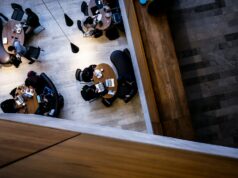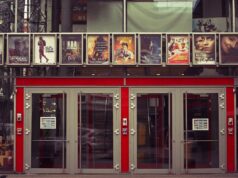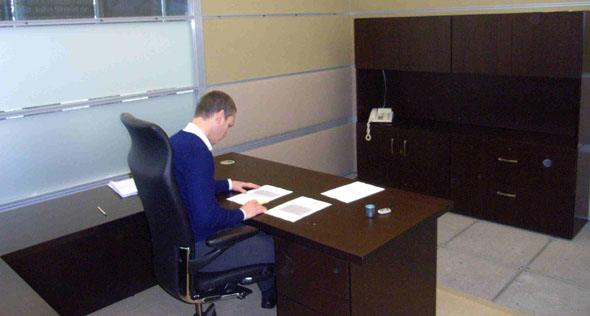 “There’s no place like home,” said Dorothy in the Wizard of Oz. With a click of the heels followed by years of rigorous research, it turns out there really is no place like home, even at the office. Research shows that employees who have personal photos, plants and nick-nacks in their office or workstation are more productive and happier. Work productivity and morale can be improved by 32% if employees are given the freedom to develop the look and feel of their own office environment. This is the major discovery of groundbreaking research led by the University of Exeter, titled, “Enrich the Office and Engage Your Staff: Why Lean is Mean,” which was undertaken over a 4 year period and supported by Ambius.
“There’s no place like home,” said Dorothy in the Wizard of Oz. With a click of the heels followed by years of rigorous research, it turns out there really is no place like home, even at the office. Research shows that employees who have personal photos, plants and nick-nacks in their office or workstation are more productive and happier. Work productivity and morale can be improved by 32% if employees are given the freedom to develop the look and feel of their own office environment. This is the major discovery of groundbreaking research led by the University of Exeter, titled, “Enrich the Office and Engage Your Staff: Why Lean is Mean,” which was undertaken over a 4 year period and supported by Ambius.
The research indicates that the prevailing preference for ‘lean space,’ which is typified by a uniform approach to design, generally leads to a heightened sense of alienation among employees, discomfort in the workplace and symptoms of “sick building” syndrome, which is a combination of ailments associated with an individual’s place of work.
Office from 1913
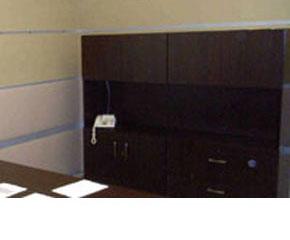 The lean organization identity imposed on the space by management generally is standardized, spartan and depersonalized with limited color and decoration enhancements. The majority of commercial furniture has been developed to support this uniform and modular design scheme.
The lean organization identity imposed on the space by management generally is standardized, spartan and depersonalized with limited color and decoration enhancements. The majority of commercial furniture has been developed to support this uniform and modular design scheme.
When challenging the theories and practices of modern space management, the history of modern office design was reviewed and examined. We looked into how office space has changed over time and why low-status offices appear to result in discomfort and discontent for their occupants? What are the consequences of different approaches to office space management?
21st Century office
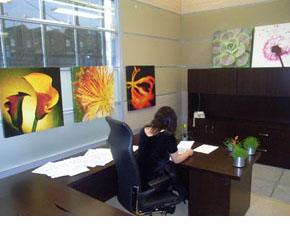 While recruitment and staff retention may not be a top priority in our recessionary climate, office workers in situations where their working environment is being eroded in the name of cost-cutting or to simply give the appearance of austerity to avoid accusations of extravagance, might think twice about staying with that company once the economy improves and alternative employers offer better conditions.
While recruitment and staff retention may not be a top priority in our recessionary climate, office workers in situations where their working environment is being eroded in the name of cost-cutting or to simply give the appearance of austerity to avoid accusations of extravagance, might think twice about staying with that company once the economy improves and alternative employers offer better conditions.
As a result of being in high-turnover, low-skill, poorly regarded jobs, low-status office workers tend to be treated as a homogenous whole who work in highly controlled, low-design environments. Comfort and well being have become subservient to the organization’s overriding goal of profit maximization.
The principle of cleanliness is intrinsic to lean space management. The “clean desk” policy, where nothing but items essential to the job at hand is permitted on the desk is commonly enforced. Comforting items such as food and hot drinks may not be permitted, nor are personal effects such as children’s drawings, photographs, plants or art.
Our research demonstrated that lean space management is simply not the best way to organize work spaces. Psychologists might argue that a lean, un-enriched space might cause problems for people as they do with animals. If zoo animals, or even laboratory rats, are placed in situations devoid of stimuli, they start to exhibit strange behaviors and show signs of stress. A growing body of evidence suggests that discomfort in the workplace and reported symptoms of “sick building syndrome” are more to do with psychological discomfort than shortcomings of the physical environment such as lighting, temperature and humidity.
Given that we spend so much of our lives in the office, it’s vital that we get the balance between control and empowerment right. Enabling workers to determine the look and feel of their environment makes a significant contribution to improved business profitability, as well as employee loyalty and well-being. When looking at the effects of a sparse office space, we can draw some parallels with how zoo animals, placed in situations devoid of stimuli, start to exhibit signs of stress.
There is sufficient and compelling evidence (from this study, as well as several others), to demonstrate that allowing employees to enrich a work place with plants and art will produce benefits that far outweigh their costs: staff engagement and retention are likely to improve; complaints about the indoor environment and air quality are likely to reduce.
It’s important to practice what you preach, and at my company we are actively working to ensure our colleagues are working in environments that feel like home to them. Colleagues are encouraged to decorate their own space for their own comfort and well-being. A good example of this is our office in France. Here is a link to some of the photo’s from this location:
picasaweb.google.com/kdlgfreeman
Ambius office in Paris which depicts a workplace as “home” type environment.
The simple approach of involving office workers in the design of their own surroundings proves to deliver the best levels of organizational identification, citizenship, well-being and productivity. Business managers would be well-advised to factor in these findings when organizing work space and recruiting employees to help with design. The good news is, it’s relatively simple to unlock employee potential – you just need to engage with them.
Readers are invited to download a copy of this workplace research at:
Words by Jeff Mariola, Divisional Managing Director for Ambius, www.ambius.com




